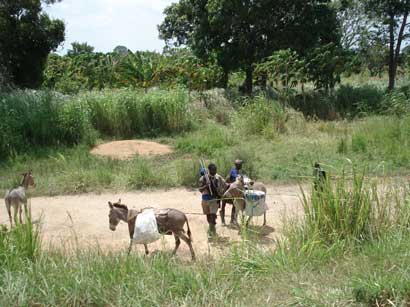Blogger: Elisabeth Darj
professor in Global Health
Last week, the conference Appropriate Health Technology for Low Resource Settings, was held in London. Access to healthcare through technology, development and research was discussed. How to promote health in rural areas, where no doctors, few health workers and no appropriate equipment are available?
 WHO has a vision “Universal Health Coverage” to increase worldwide access of qualitative and effective healthcare. Good health technology has existed for more than 100 years, but is still not accessible to all.
WHO has a vision “Universal Health Coverage” to increase worldwide access of qualitative and effective healthcare. Good health technology has existed for more than 100 years, but is still not accessible to all.
There is now a revolutionary game change in process. The infrastructure in many locations is poor and the supply chain unreliable. Subsequently health managements are omitting investments in expensive stationary instruments, which need skilled professionals, knowledge and tools for maintenance, as new options are developed.
Low-cost sensors in devices are connected to smartphones, which processes signals, transfer data to a specialist, on a distance, with the capacity to analyse, interpret, and give quick feed-back and advice for relevant treatment.
The conference involved health workers and engineers, and focused quite a lot on mobile telephones. Examples of new projects are:
- Taking a picture directly from the microscope, of a slide of blood, transfer it, which makes the diagnosis of malaria or anaemia possible, in a hospital far away.
- Tapping directly on the telephone display to count respiratory rate of a child with suspected pneumonia. This method is more accurate and quick, compared to subjective counting for one minute. The tapping pattern is sent and analysed. This used in a flow chart, together with body temperature (also directly measured by a device into the telephone) makes it possible to advice on antibiotic treatment or not.
- A new stethoscope connected to a telephone, can transfer sounds of heart murmurs of children with suspected rheumatic fever affecting the heart, directly to a cardiologist.
- Further ECG, X-ray-images, direct feed-back during training sessions of how to use ventilation bulbs, assessing depression from the activity of the mobile phone, screening for sleep apnoea, blood pressure measurement, automatic evaluation of the colours on urine tests strip, to mention a few.
Discussions also included the involvement of leadership, marketing process, knowledge and motivation to adapt to new technology.
NTNU’s vision is “Knowledge for a better world” and The Faculty of Medicine’s vision is “Health for a better world”. Our values are to be creative, constructive, critical, respectful and considerate in all the things we do. This gives us, at NTNU with our expertise within in technology, a particular responsibility to be a part of the innovation development for the future. The challenge is, to develop health technology that is inexpensive, simple and easy to use.
We are looking forward to the new international Master program in Global Health, which will start in 2015, .
A part of the program will be Innovation in Global Health, with collaboration between Gløshaugen and DMF. If you have ideas or are want more information, please do not hesitate to contact any of us, who participated in the conference; elisabeth.darj@ntnu.no, erik.solligard@stolav.no, karin.tommeras@ntnu.no
You are all welcome to join the Global Health Day 21 October. Read more about the speakers. Here you can register for the seminar.
